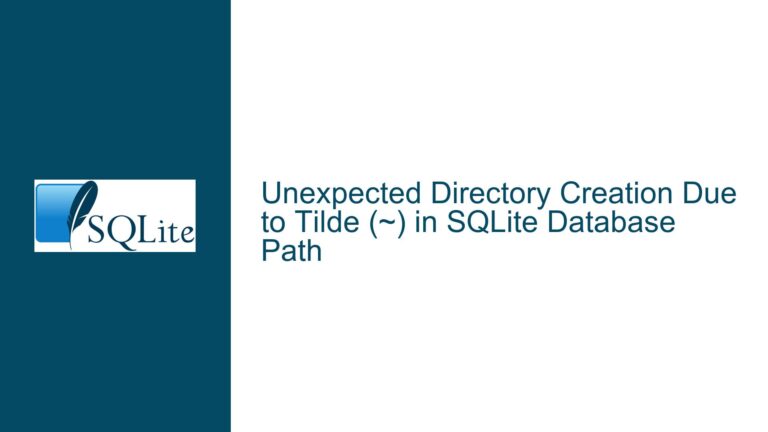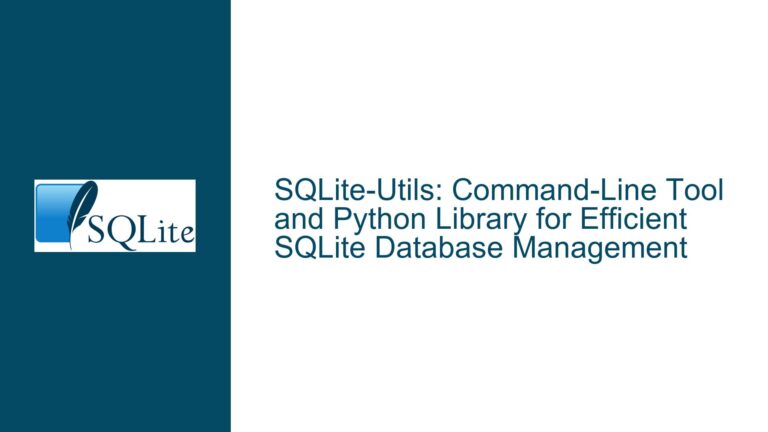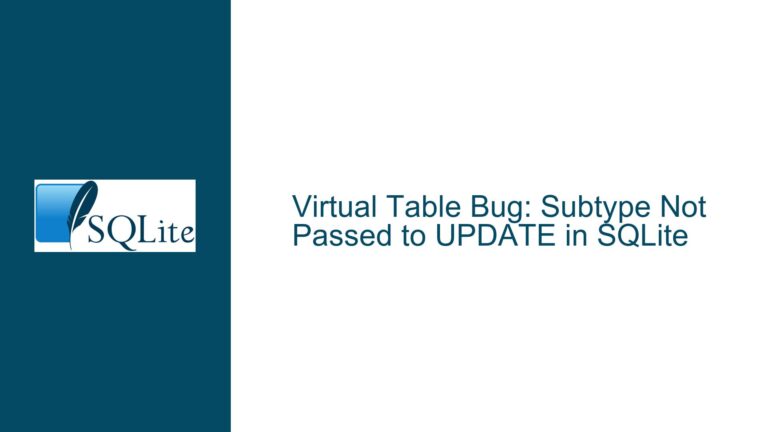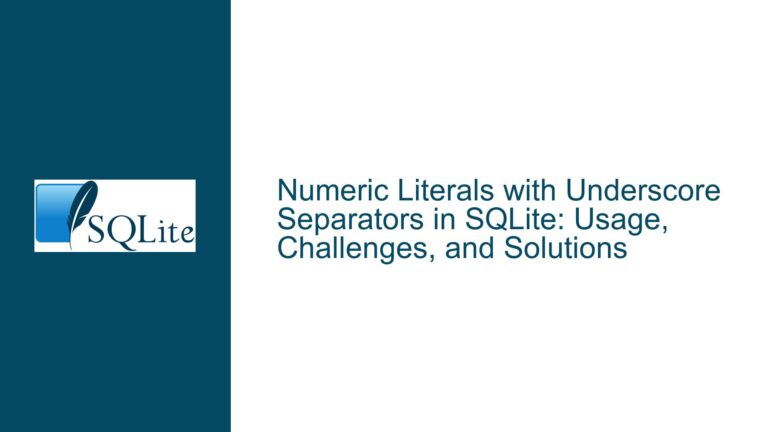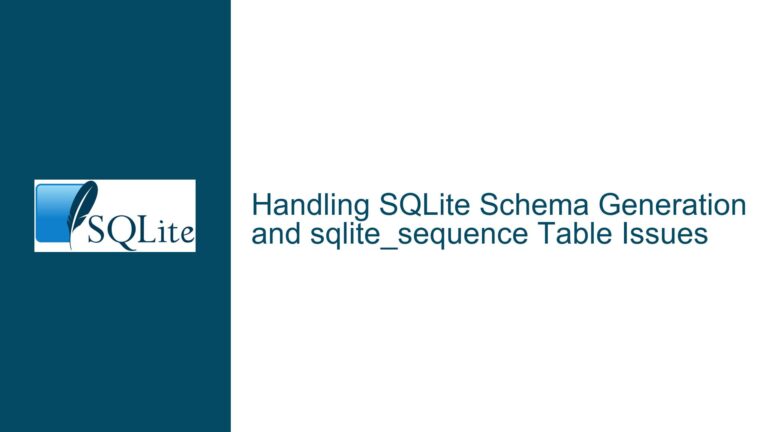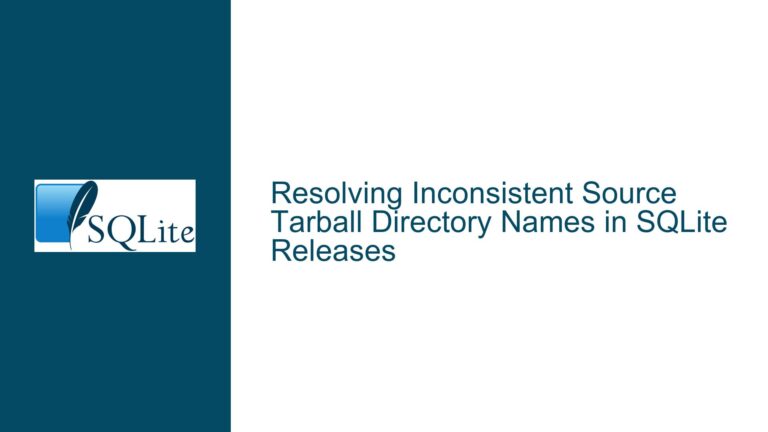Behavioral Change in SQLite’s round() Function Due to printf Implementation Updates
Rounding Discrepancies Between SQLite Versions 3.28 and 3.29
The rounding behavior of the round() function in SQLite has exhibited noticeable changes between versions 3.28 and 3.29, particularly when dealing with floating-point numbers. Users have reported that the results of rounding operations, such as round(1.15, 1) and round(9.95, 1), differ between these versions. In SQLite 3.28, the results are 1.1 and 9.9, respectively, while in SQLite 3.29, the results are 1.2 and 10.0. This discrepancy has raised concerns, especially among users relying on SQLite for financial calculations where precision is critical.
The root of this issue lies not in the round() function itself but in the underlying printf implementation used by SQLite. The round() function in SQLite relies on the printf family of functions to convert floating-point numbers to strings with the specified precision. In SQLite 3.29, the printf implementation was updated to improve the accuracy of floating-point-to-string conversions. Specifically, the new implementation avoids scaling and instead adds fractional values like 0.5, 0.05, or 0.005 directly to the number before rounding. This change ensures that the results adhere to IEEE 754 standards for floating-point arithmetic, maintaining a precision of 1 unit in the last place (ulp).
The implications of this change are significant. While the round() function itself remains unchanged, the improved accuracy of the printf implementation affects how rounding is performed. This has led to differences in results between SQLite 3.28 and 3.29, particularly for edge cases where the fractional part of a number is close to a rounding boundary. For example, the number 1.15 is now rounded to 1.2 in SQLite 3.29, whereas it was rounded to 1.1 in SQLite 3.28.
Impact of IEEE-Compliant Floating-Point Conversions on Rounding
The behavioral change in the round() function is a direct consequence of updates to SQLite’s printf implementation, which now adheres more strictly to IEEE 754 standards for floating-point arithmetic. The key difference lies in how floating-point numbers are converted to strings. In SQLite 3.28 and earlier versions, the printf implementation used a method that involved scaling the number, adding 0.5, and then descaling it. This approach, while functional, introduced minor inaccuracies due to the limitations of floating-point arithmetic.
In SQLite 3.29, the printf implementation was revised to avoid scaling and instead add fractional values like 0.5, 0.05, or 0.005 directly to the number before rounding. This change ensures that the results are more accurate and consistent with IEEE 754 standards. The new method maintains a precision of 1 ulp, which is critical for applications requiring high levels of accuracy, such as financial calculations.
However, this improvement in accuracy has also led to changes in the behavior of the round() function. For example, the number 1.15 is now rounded to 1.2 in SQLite 3.29, whereas it was rounded to 1.1 in SQLite 3.28. This discrepancy arises because the new printf implementation more accurately represents the fractional part of the number, leading to different rounding outcomes.
The impact of this change is particularly noticeable in financial applications, where rounding to the nearest cent is a common requirement. While the new implementation is more accurate, it may produce results that differ from those obtained using earlier versions of SQLite. This has led to concerns among users who rely on SQLite for financial calculations, as even minor discrepancies in rounding can have significant implications.
Addressing Rounding Issues in Financial Applications with SQLite
The changes to SQLite’s printf implementation have improved the accuracy of floating-point-to-string conversions, but they have also introduced discrepancies in the behavior of the round() function. For users relying on SQLite for financial calculations, these discrepancies can be problematic. To address this issue, it is important to understand the limitations of the round() function and explore alternative approaches to rounding that are better suited for financial applications.
The round() function in SQLite uses "Nearest Half-Away-from-Zero" rounding, which is not ideal for financial calculations. In financial applications, "Nearest Half-to-Even" rounding (also known as "bankers’ rounding") is typically preferred because it minimizes rounding errors over multiple calculations. Unfortunately, SQLite’s round() function does not support this type of rounding natively.
To implement "Nearest Half-to-Even" rounding in SQLite, users can define a custom rounding function using SQLite’s C API. The following code snippet demonstrates how to implement such a function:
#include <math.h>
#include <sqlite3.h>
void roundhalfeven(sqlite3_context *context, int argc, sqlite3_value **argv) {
double x = sqlite3_value_double(argv[0]);
int digits = sqlite3_value_int(argv[1]);
double scale = pow(10.0, digits);
x *= scale;
double y = x - remainder(x, 1.0);
sqlite3_result_double(context, y / scale);
}
This function can be registered with SQLite using the sqlite3_create_function() API. Once registered, it can be used in SQL queries to perform "Nearest Half-to-Even" rounding. For example:
SELECT roundhalfeven(1.15, 1); -- Returns 1.2
SELECT roundhalfeven(9.95, 1); -- Returns 10.0
In addition to implementing custom rounding functions, users should also consider the following best practices when using SQLite for financial calculations:
Use Fixed-Point Arithmetic: Instead of using floating-point numbers, represent monetary values as integers representing the smallest unit of currency (e.g., cents). This avoids the pitfalls of floating-point arithmetic altogether.
Validate Results: Always validate the results of rounding operations to ensure they meet the required precision and accuracy standards.
Test Across Versions: If your application relies on specific rounding behavior, test it across different versions of SQLite to ensure consistent results.
Document Assumptions: Clearly document any assumptions about rounding behavior in your application’s code and documentation.
By following these best practices and implementing custom rounding functions where necessary, users can mitigate the impact of changes to SQLite’s round() function and ensure accurate and consistent results in financial applications.

